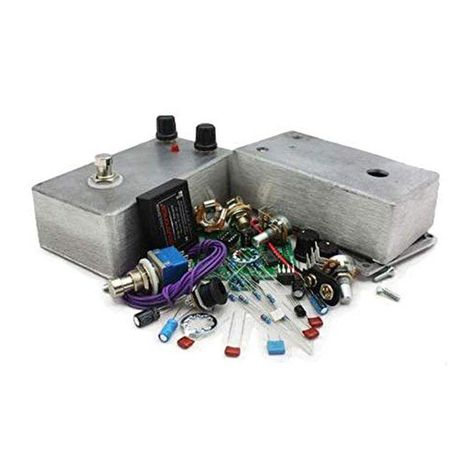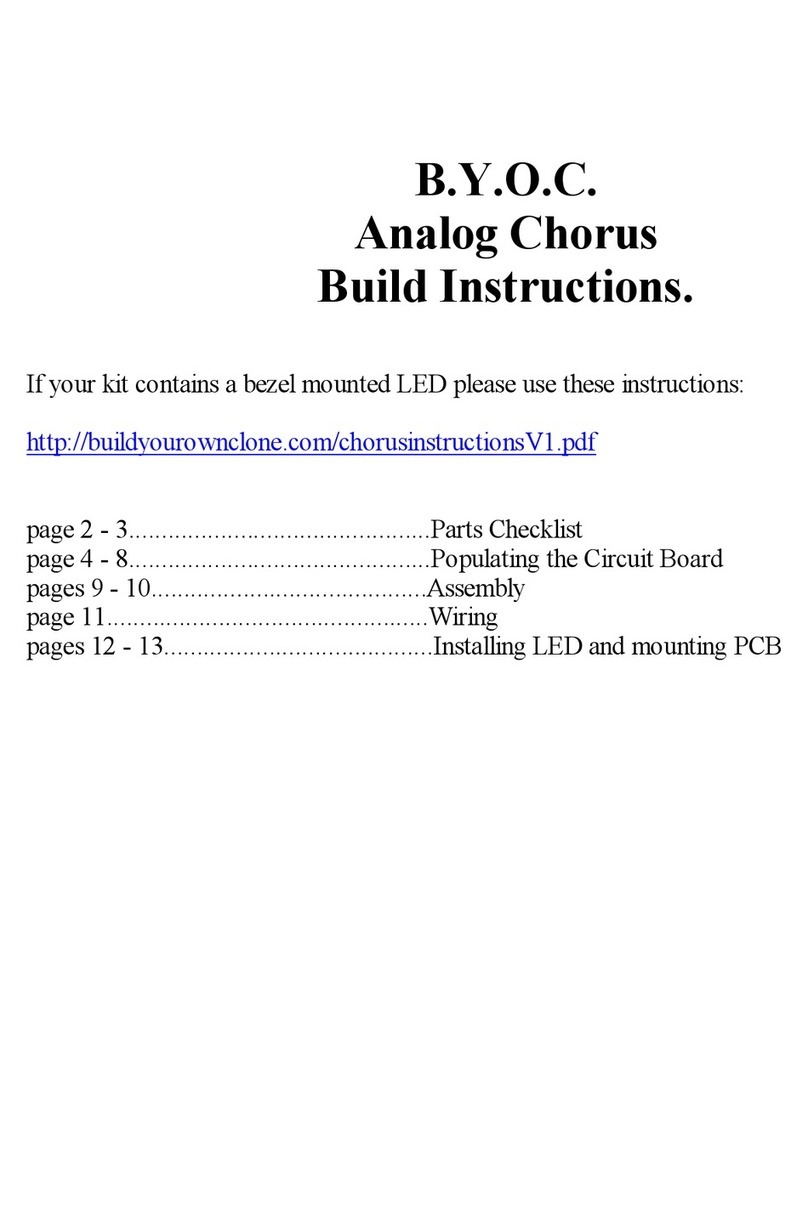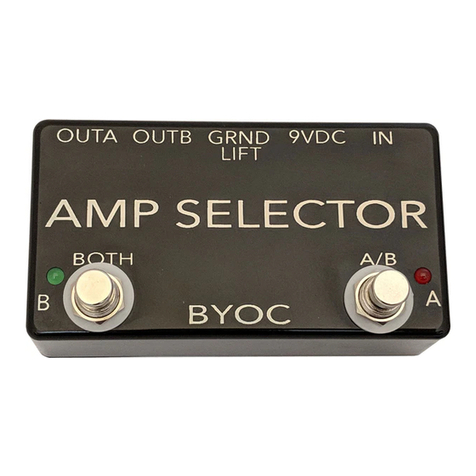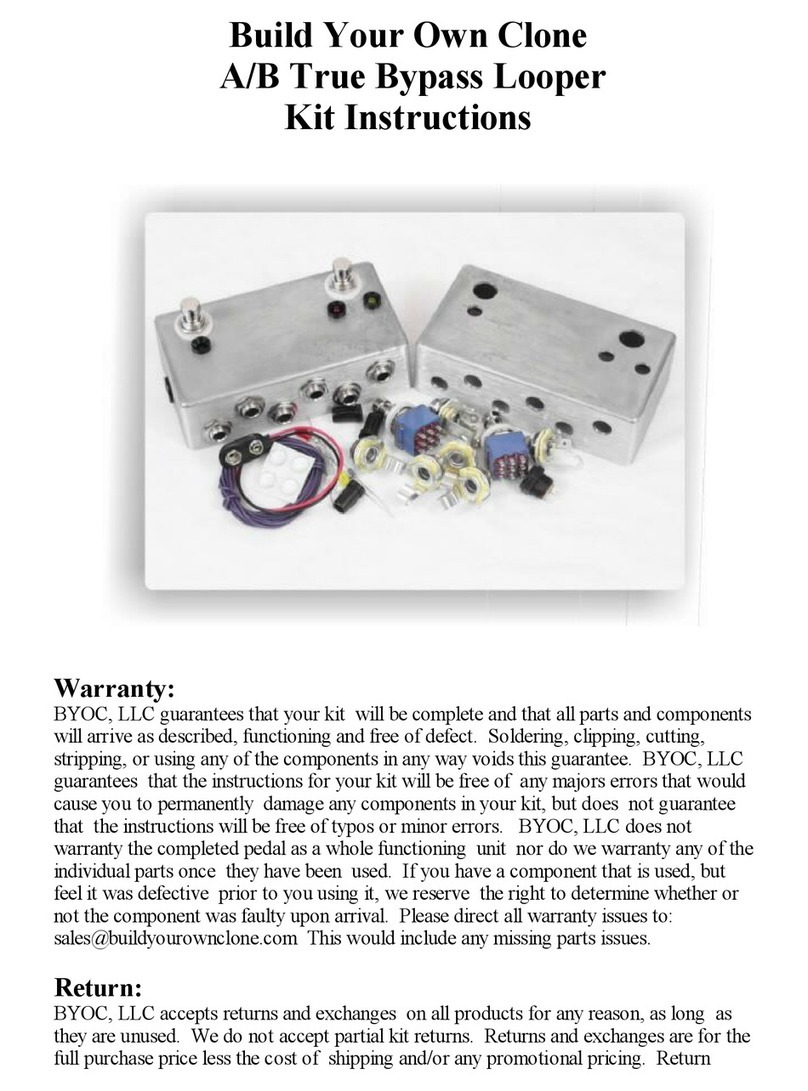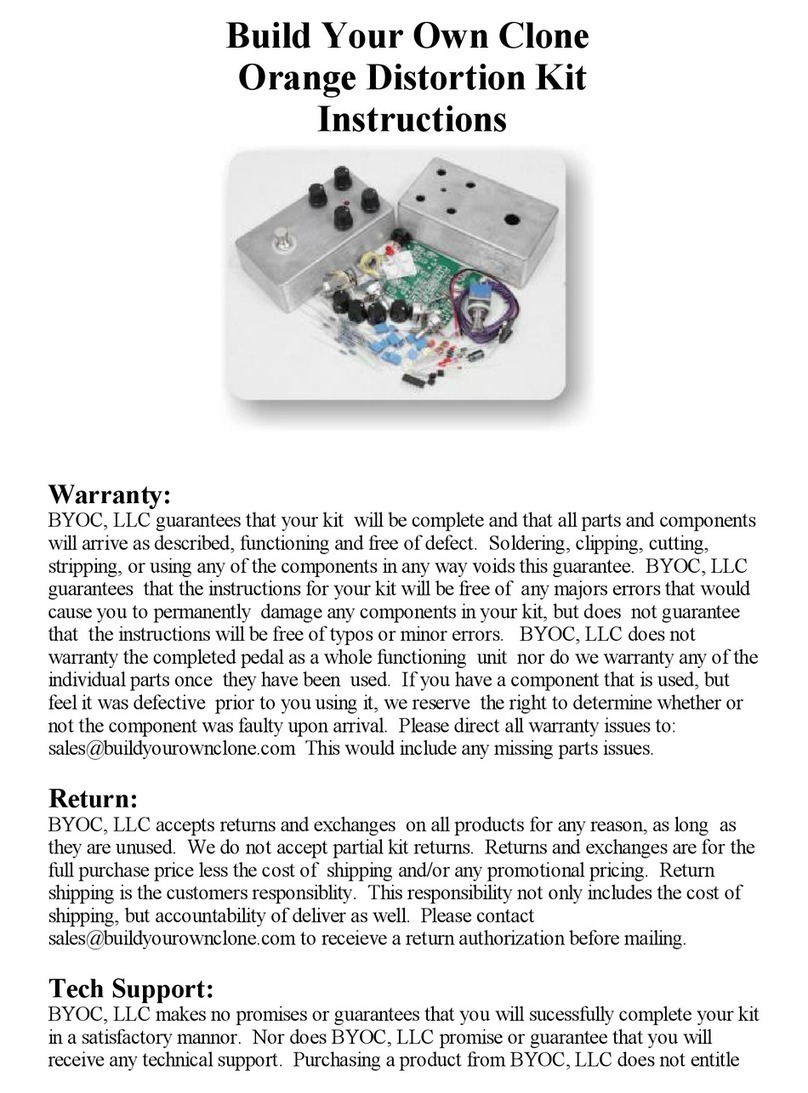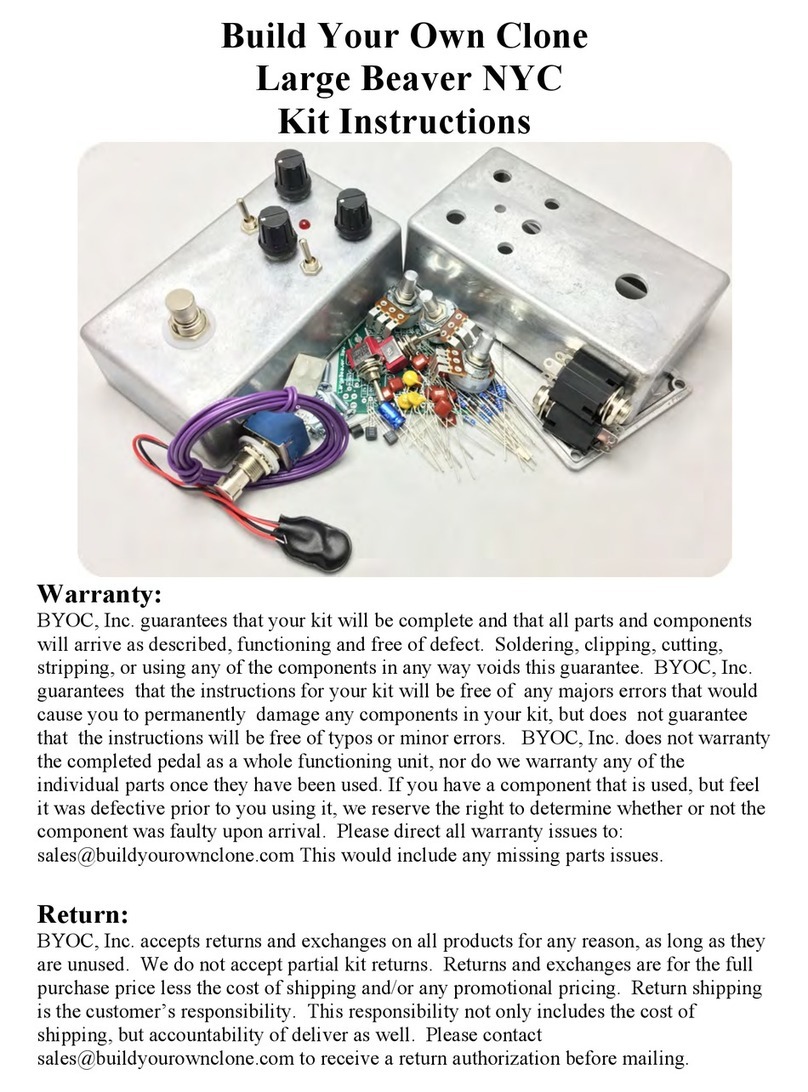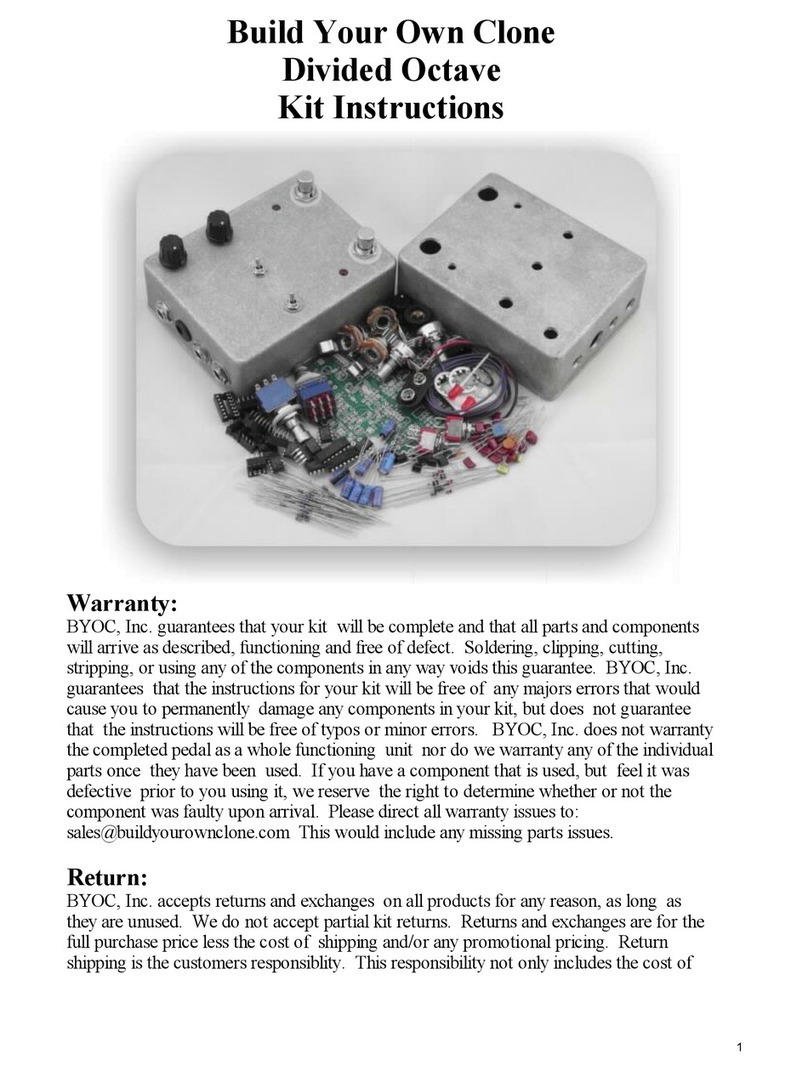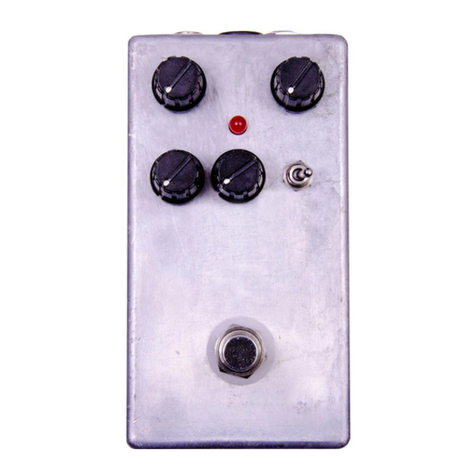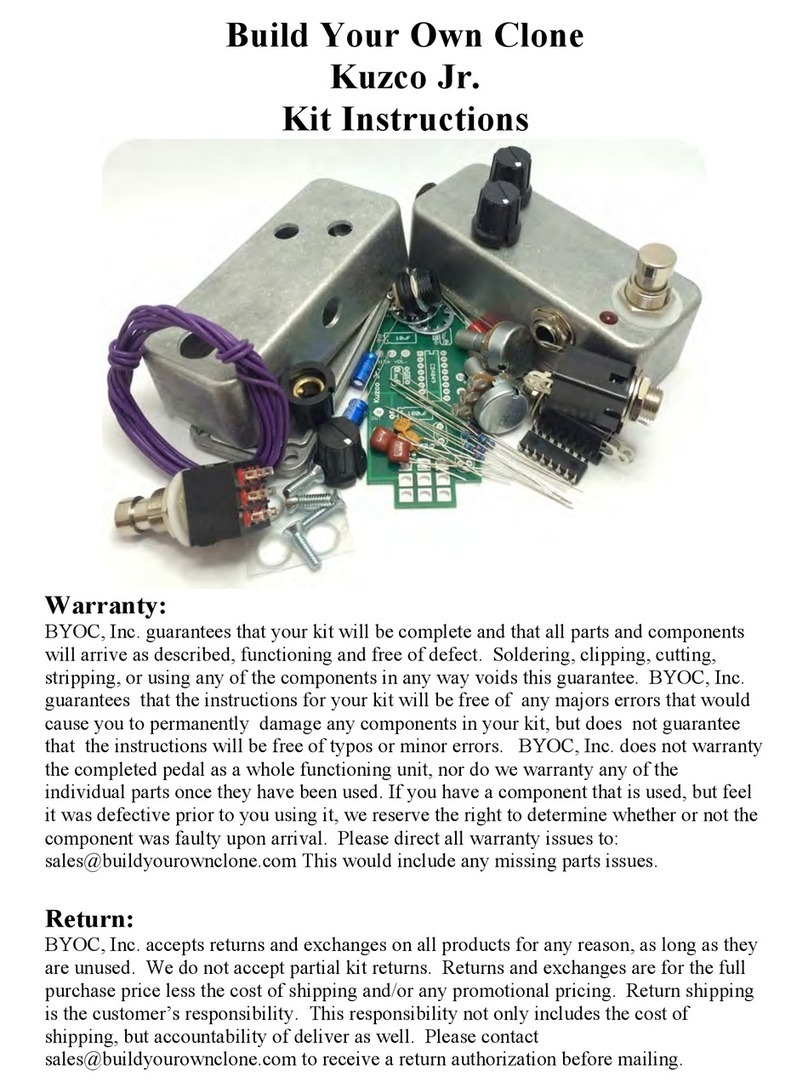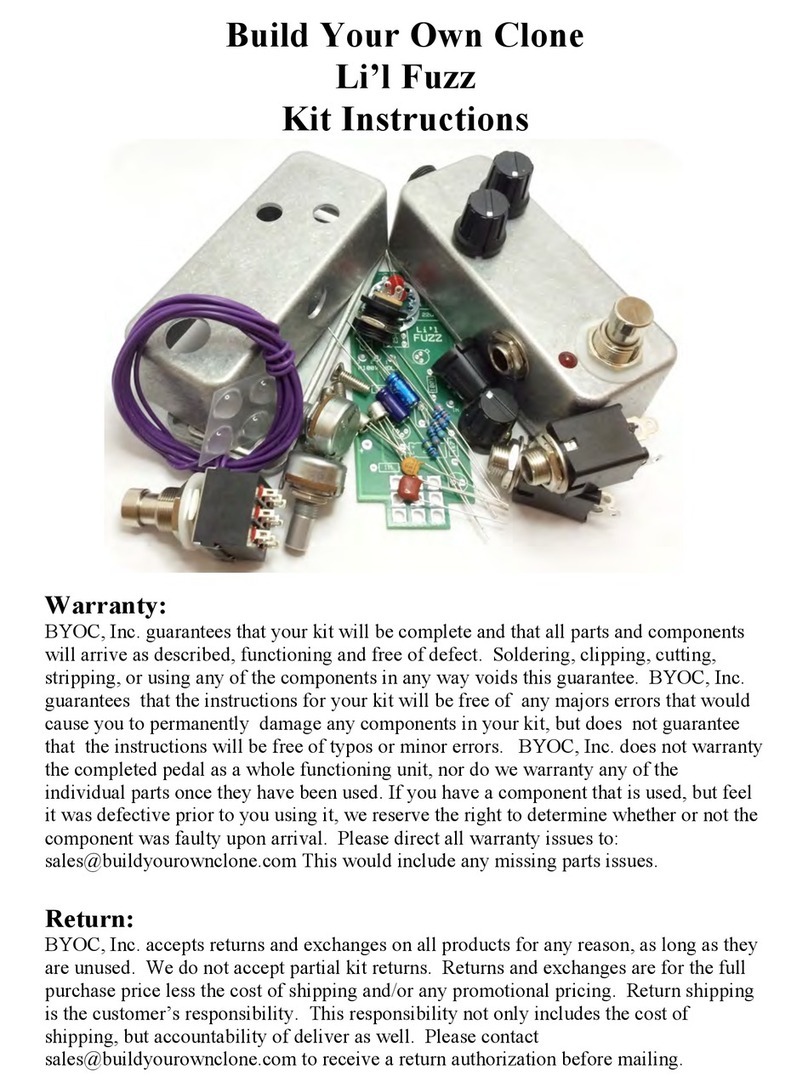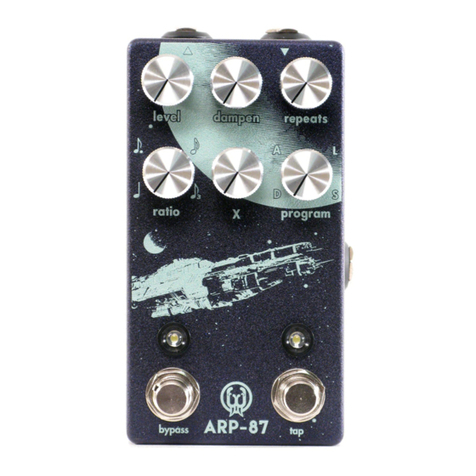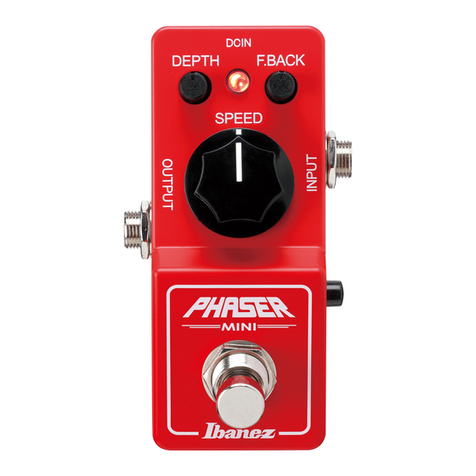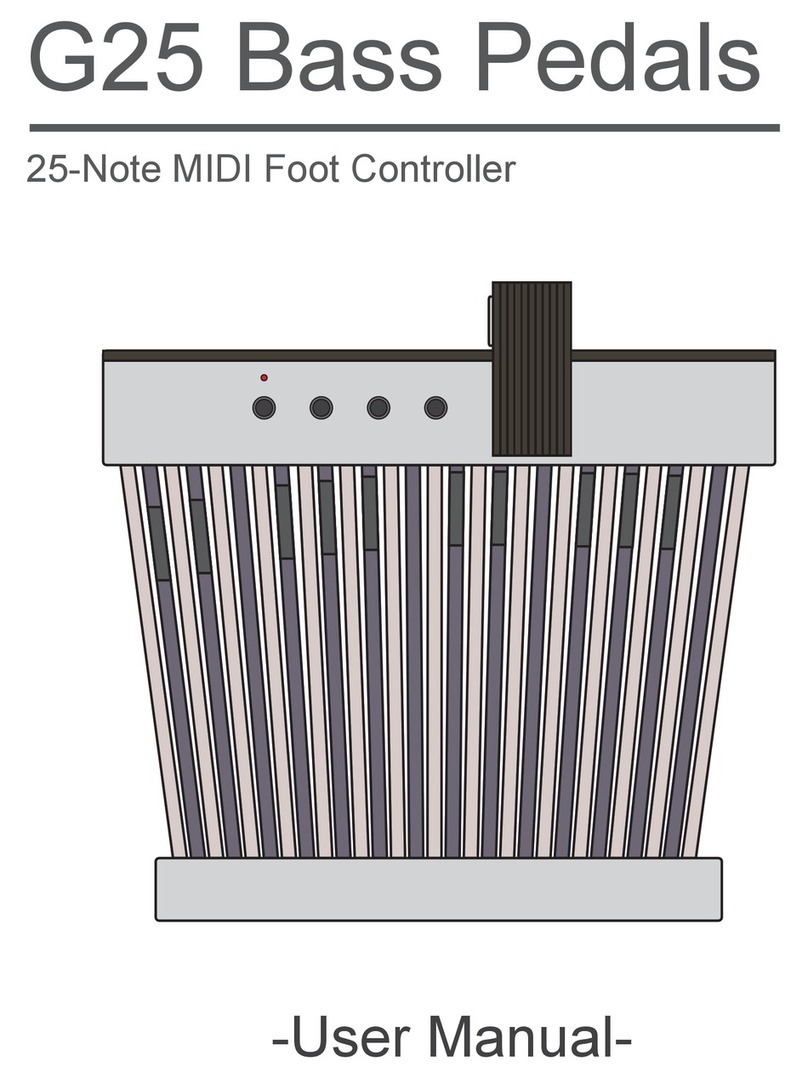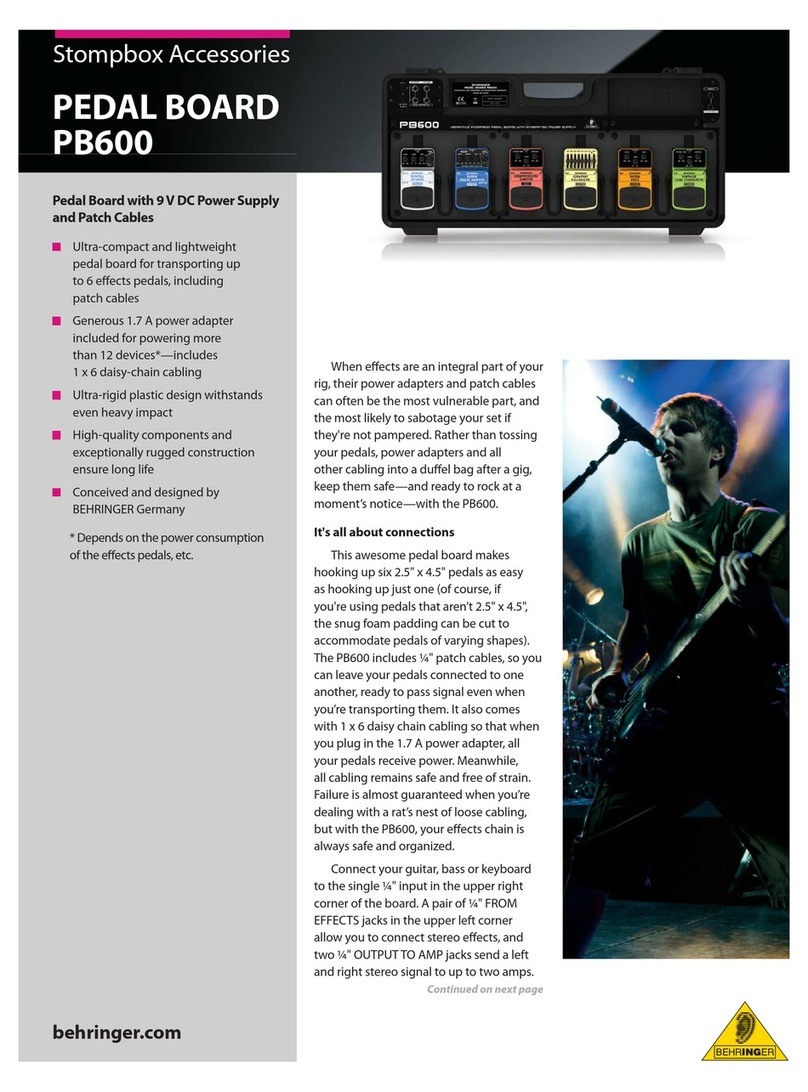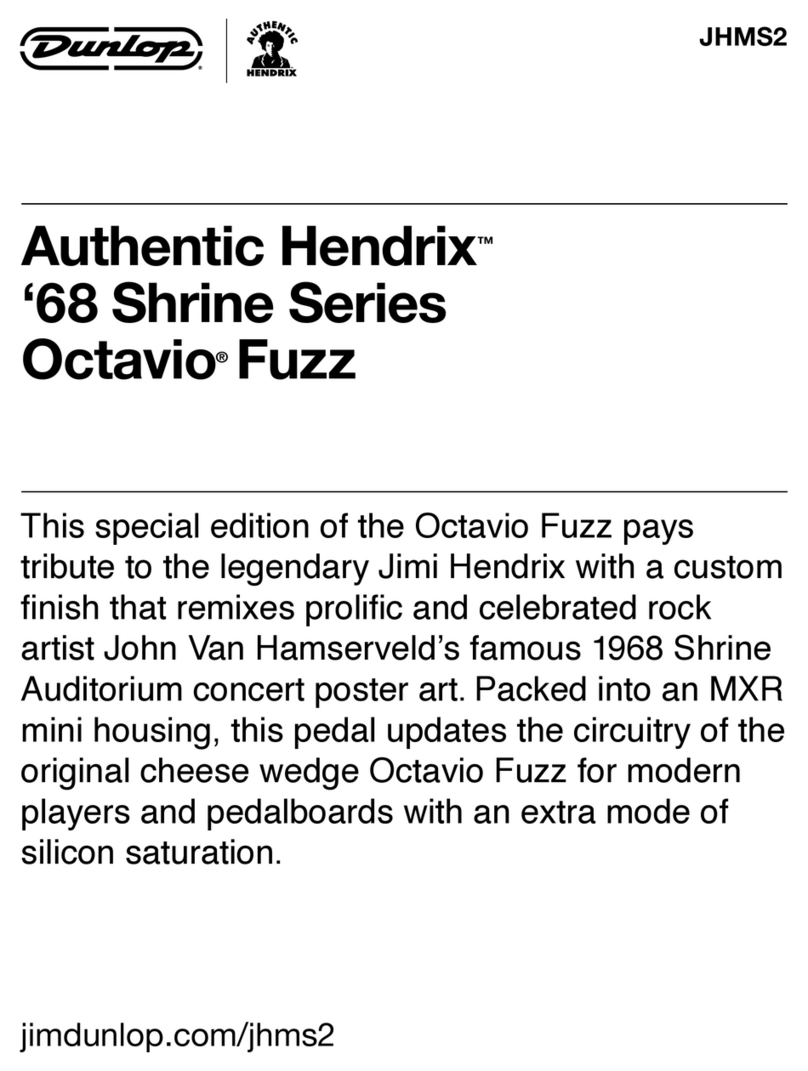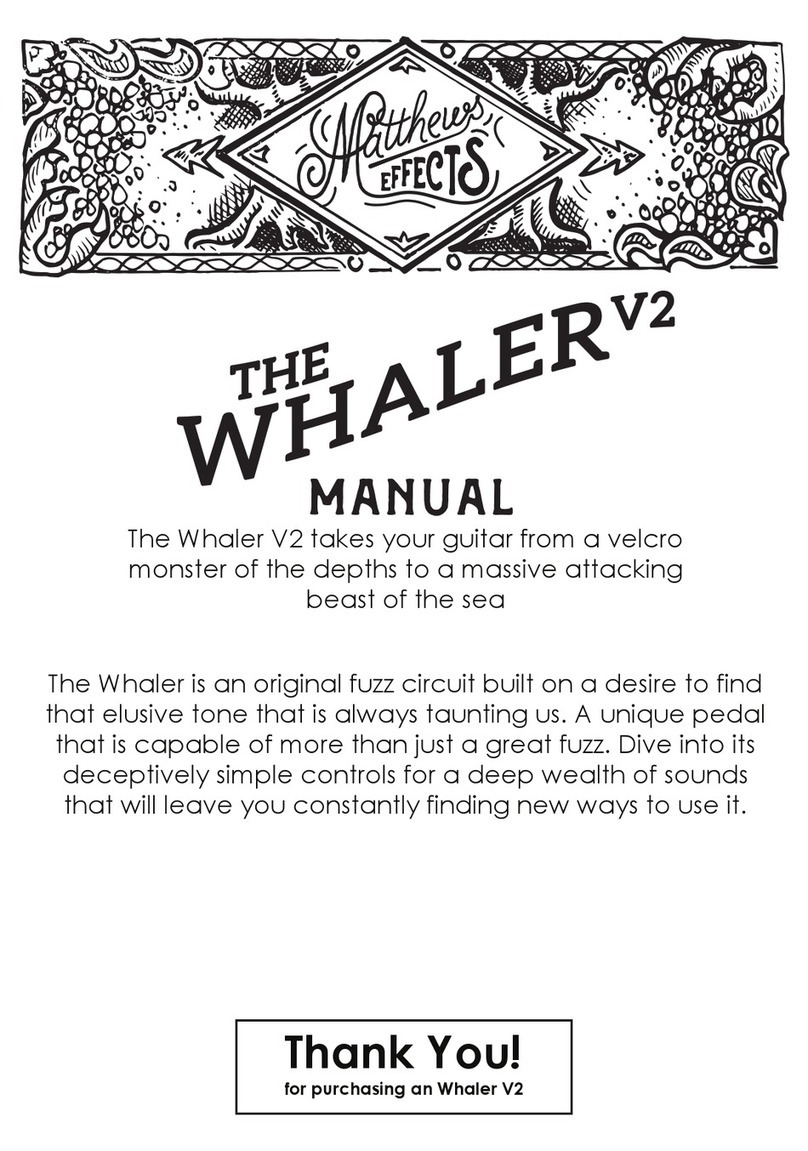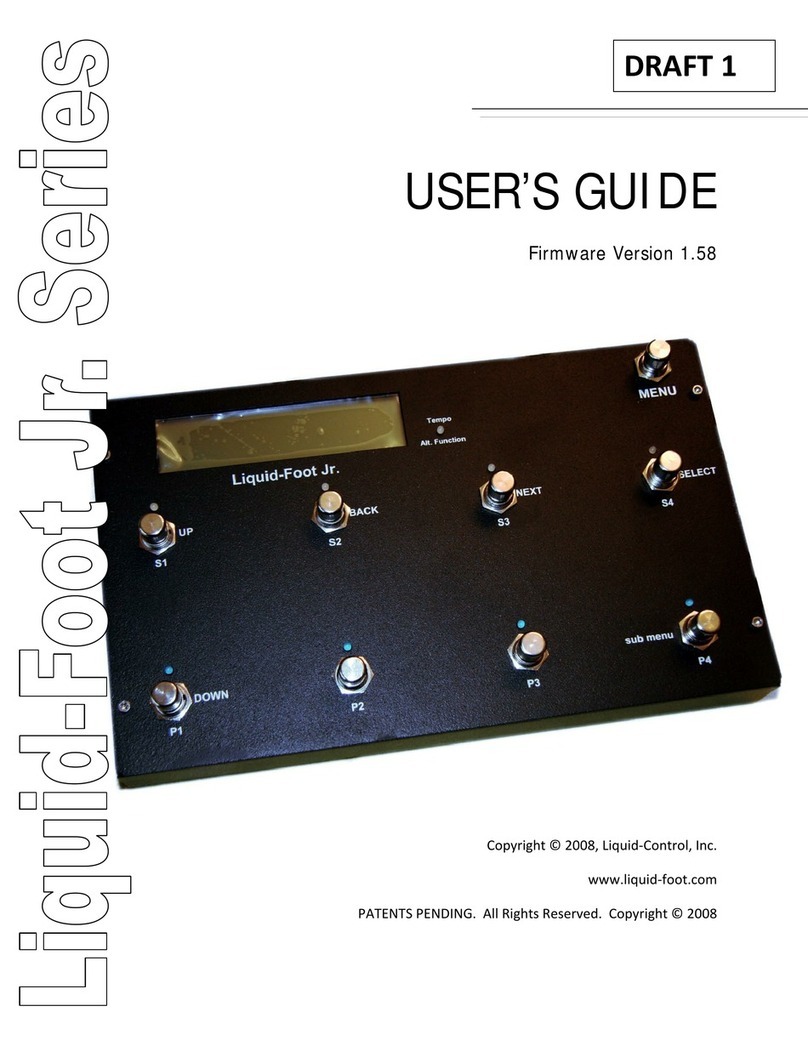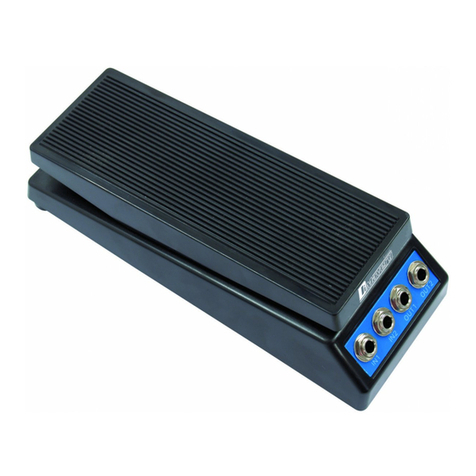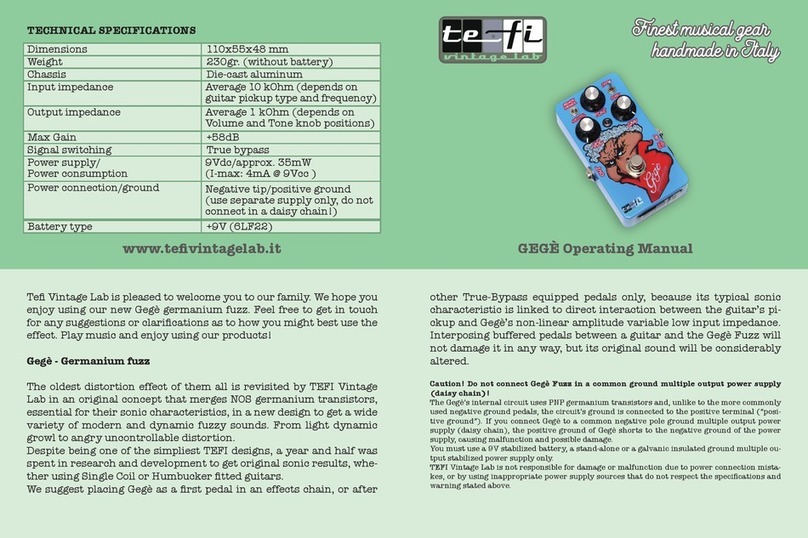!
!
!
!
DISCLAIMER
Build at your own risk!!! BYOC, Inc. is not liable or responsible for any damages, injuries, or deaths that may incur from or while
building this kit. It is your own responsibility to follow proper safety precautions. Never attempt to build, modify, repair, or perform
any sort of maintenance on your amplifier while the power cord is plugged into an AC power source.
!
This kit contains only the amplifier chassis. It is intended to be housed in a non-conductive, electrically insulated cabinet or enclosure.
This kit does not come with any such cabinet or enclosure and is not intended to be used without one. It is your responsibility to
house this amplifier kit in a proper cabinet or enclosure before attempting to use it.
!
Warranty:
BYOC, Inc. guarantees that your kit will be complete and that all parts and components will arrive as described, functioning
and free of defect. Soldering, clipping, cutting, stripping, or using any of the components in anyway voids this
guarantee. BYOC, Inc. guarantees that the instructions for your kit will be free of any majors errors that would cause you
to permanently damage any components in your kit, but does not guarantee that the instructions will be free of typos or
minor errors. BYOC, Inc. does not warranty the completed kit as a whole functioning unit, nor do we warranty any of the
individual parts once they have been used. If you have a component that is used, but feel it was defective prior to you using it,
we reserve the right to determine whether or not the component was faulty upon arrival. Please direct all warranty issues to:
!
Return:
BYOC, Inc. accepts returns and exchanges on all products for any reason, as long as they are unused. We do not accept partial kit
returns. Returns and exchanges are for the full purchase price less the cost of shipping and/or any promotional pricing. Return
shipping is the customer’s responsibility. This responsibility not only includes the cost of shipping, but accountability of deliver as
well.
Please
contact
[email protected] to
receive
a
return
authorization
before
mailing.
!
Tech
Support:
BYOC, Inc. makes no promises or guarantees that you will successfully complete your kit in a satisfactory manor. Nor does BYOC,
Inc. promise or guarantee that you will receive any technical support. Purchasing a product from BYOC, Inc. does not entitle you to
any amount of technical support. BYOC, Inc. does not promise or guarantee that any technical support you may receive will be able

